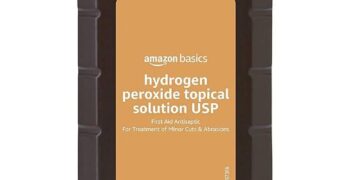Table of Contents
For years, I felt like I was losing a battle against an invisible enemy.
It was a quiet war, fought in the late hours of the night, listening to the sound of my young son’s persistent, dry cough.
I’d watch him rub his itchy, swollen eyes in the morning, and my heart would break a little more each day.
We had the diagnosis—a severe dust mite allergy—and I had my marching orders: wage an all-out war on dust.
I washed bedding in hot water, invested in air purifiers, and, most importantly, I vacuumed.
I vacuumed with a vengeance.
My journey through the consumer vacuum market was a masterclass in frustration.
I started with a popular, brightly colored bagless model that promised powerful cyclonic action and “HEPA-like” filtration.
It seemed to work, filling its clear bin with a satisfying amount of dust and pet hair.
But after every cleaning session, a peculiar, fine-dust smell hung in the air.
My son’s symptoms didn’t improve; if anything, they seemed to flare up after I cleaned.
Convinced I just needed a better machine, I upgraded.
I spent hundreds of dollars on a newer, more powerful model that explicitly advertised a “99% HEPA” filter.
The marketing was slick, the reviews were glowing, and I was certain this was the answer.
Yet, the cycle of disappointment continued.
The machine clogged easily, lost suction quickly, and still produced that same unsettling “dusty” exhaust smell.1
The breaking point came one Saturday afternoon.
I had spent the entire morning on a deep clean, determined to give my son a clear night of breathing.
That evening, his coughing was the worst it had ever been.
As I sat by his bed, it hit me with sickening clarity: my attempts to clean were making things worse.
The very machine I trusted to protect my family was, in fact, polluting our home.
That moment of despair sparked an obsession.
I was no longer just a frustrated consumer; I was a researcher on a mission.
I had to answer one single, maddening question: How can a machine designed to remove dust actually be putting more of it into the air? My quest for an answer would lead me far beyond product reviews and into the world of industrial engineering, ultimately revealing a truth about clean air that most vacuum manufacturers don’t want you to know.
In a Nutshell: The Air Integrity System
My journey taught me to stop thinking about vacuums as floor cleaners and start evaluating them as what they should be: Air Integrity Systems.
This new framework, inspired by the technology used in aerospace and medical cleanrooms, is built on three non-negotiable pillars that must work in perfect harmony.
- The Filtration Core: The system must have a True HEPA filter, certified to capture 99.97% of particles down to the most difficult size, 0.3 microns. Anything less, like “HEPA-like” or “HEPA-type,” is a marketing gimmick with no scientific standing.
- The Containment Hull: The filter is useless if the vacuum’s body leaks. The machine must have a Completely Sealed System, using gaskets and precision engineering to ensure that 100% of the air that enters the vacuum is forced through the HEPA filter before it is exhausted. An unsealed vacuum actively pumps microscopic allergens back into the air you breathe.
- The Power Plant: The motor must provide a sophisticated balance of two types of power. Suction (Water Lift) provides the raw force to lift embedded dirt, while Airflow (CFM) provides the current to carry it away. A well-engineered vacuum optimizes both for true cleaning effectiveness without compromising filtration.
Part 1: The Epiphany – A Lesson from 40,000 Feet
My research began in the usual places—consumer forums and product review sites—but I found myself sinking in a sea of conflicting anecdotes and marketing jargon.3
The real breakthrough came when I shifted my search away from household appliances and toward environments where air purity is a matter of life and death: hospital operating rooms, semiconductor manufacturing cleanrooms, and, most surprisingly, the cabins of commercial aircraft.5
I learned that in these critical environments, a filter is never considered in isolation.
The entire system is designed as a self-contained, sealed unit.
An airplane flying at 40,000 feet doesn’t just filter its cabin air; it maintains a pressurized, sealed fuselage to ensure that the controlled internal environment is not compromised by the hostile environment outside.5
Similarly, a cleanroom used for building microchips maintains positive air pressure, so that any potential leak blows clean air
out, rather than sucking contaminated air in.9
This was the epiphany that changed everything.
I had been focusing on a single component—the filter—when I should have been evaluating the integrity of the entire machine.
A true high-filtration vacuum isn’t a “dirt sucker.” It’s an Air Integrity System.
Its primary job is not just to pick up visible crumbs, but to capture microscopic, lung-damaging particles and contain them permanently.
This new mental model gave me a powerful framework for understanding why my previous vacuums had failed so spectacularly.
They may have had a decent filter, but they were housed in a leaky, unpressurized “fuselage.” They were not designed as integrated systems.
This realization allowed me to cut through the marketing noise and establish a new set of non-negotiable criteria, built on the three pillars of a true Air Integrity System: the Filtration Core, the Containment Hull, and the Power Plant.
Part 2: Pillar I – The Filtration Core
My first mistake was trusting the word “HEPA” on the box.
I learned the hard way that in the world of filtration, language is everything, and most marketing is designed to mislead.
The term HEPA is not a brand name or a style; it is a rigorous, scientific standard.10
Deconstructing True HEPA
HEPA stands for High-Efficiency Particulate Air.
The official standard, as defined by the U.S. Department of Energy (DOE), is incredibly specific: a filter must be capable of removing at least 99.97% of airborne particles with a size of 0.3 microns (µm).11
To put that in perspective, a single human hair is about 50-150 microns wide.13
A True HEPA filter is certified to trap particles hundreds of times smaller than that.
This includes the most common triggers for respiratory distress: dust mite feces, pet dander, pollen, mold spores, and even some bacteria and viruses.13
But why the specific focus on 0.3 microns? It seems counterintuitive that a filter would be rated based on its performance with such a specific particle size.
The reason is that 0.3 microns is what scientists call the Most Penetrating Particle Size (MPPS).12
Due to the complex physics of airflow, particles that are
larger or smaller than 0.3 microns are actually easier to trap.
By testing and certifying the filter at its absolute weakest point, the standard guarantees an efficiency of at least 99.97% for all particle sizes.12
The Science of Capture, Simplified
A HEPA filter is not a simple sieve.
It’s a dense mat of randomly arranged fiberglass or synthetic fibers that traps particles through a combination of three distinct physical mechanisms 10:
- Impaction: Larger, heavier particles (like large dust or pollen grains) have too much inertia to follow the curving air currents around the filter fibers. They travel in a straight line and slam directly into a fiber, where they stick. Think of a large bug hitting a car’s windshield.
- Interception: Mid-sized particles are lighter and can follow the airflow, but as they flow past a fiber, they come close enough to get snagged, like a piece of lint catching on a sweater.
- Diffusion: This is the most fascinating mechanism and is what allows HEPA filters to capture extremely small particles (typically below 0.1 microns). These tiny particles are so light that they are constantly being knocked around by air molecules in a random, erratic pattern known as Brownian motion. This zigzagging path makes it statistically inevitable that they will collide with a filter fiber and become trapped, even if they are much smaller than the gaps between fibers.13
Exposing the Marketing Wild West
The regulatory void around the term “HEPA” on consumer products has created a “Wild West” scenario where manufacturers can exploit consumer health concerns without providing a medically effective solution.16
This was the trap I fell into.
If you see these terms on a box, you are not buying a product that meets the HEPA standard:
- “HEPA-like,” “HEPA-style,” or “HEPA-type”: These terms are legally meaningless. They indicate that the filter may look like a HEPA filter or use similar materials, but it has not been tested or certified to meet the 99.97% at 0.3 microns standard. These filters may capture larger dust particles but will fail to trap the fine, microscopic allergens that cause the most respiratory harm.3
- “99% HEPA” or “Removes 99% of Dust and Pollen”: This is another deceptive tactic. It sounds impressive, but it deliberately avoids the specifics of the HEPA standard. It doesn’t specify the particle size it’s capturing (it’s likely only capturing large particles) and falls short of the 99.97% efficiency requirement.17
A manufacturer that produces a genuine True HEPA filter will proudly state the full specification: “Captures 99.97% of particles as small as 0.3 microns.” If you don’t see those numbers, you are not getting HEPA-level protection.17
Part 3: Pillar II – The Containment Hull
This was my true ‘Aha!’ moment.
The reason my old vacuums made the air feel dirtier was because they were literally leaking.
I had bought a top-of-the-line filter and installed it in a machine full of holes.
It was like trying to bail out a boat with a sieve.
Even the best HEPA filter in the world is rendered completely useless if the air it’s meant to clean can simply go around it.
The Sealed System Imperative
This is the single most important and overlooked feature of a true allergy-friendly vacuum.
A Sealed System (also marketed as “Completely Sealed” or “Whole-Machine Filtration”) means the vacuum cleaner has been engineered so that all the air drawn into the machine is forced through the entire filtration system before being exhausted.18
In a poorly designed, unsealed vacuum, the powerful motor creates high pressure inside the machine’s body.
Air, like water, will always follow the path of least resistance.
Instead of pushing through the dense, high-resistance HEPA filter, it will escape through any available gap: the seams in the plastic housing, poorly fitted hose connections, or around the edges of the dustbin or filter compartment.19
This phenomenon is known as
air bypass, and it is the critical flaw in the vast majority of consumer vacuums.19
The Anatomy of a Sealed System
Achieving a truly sealed system is a matter of deliberate, high-quality engineering.
It’s not about simply slapping a HEPA filter near the exhaust port.
It involves:
- High-Quality Gaskets: Flexible rubber or foam gaskets are used at every connection point in the airflow path—where the dustbin meets the body, where the filter casing locks into place, and around the motor housing—to create an airtight seal.19
- Precision-Molded Housings: The plastic or metal components of the vacuum body are molded to tight tolerances, minimizing the gaps between parts where air could escape.
- Airtight Construction: The entire airflow path, from the cleaning head to the final exhaust port, is designed to be a single, uninterrupted, and sealed channel.20
This level of engineering is why vacuums with confirmed sealed systems, like those from brands such as Miele and Sebo, often come with a higher price tag.
It is a fundamentally more robust and complex construction than a standard vacuum.19
The Dust-Blower Effect
An unsealed vacuum doesn’t just fail to clean the air; it actively makes it worse.
This is what I call the “Dust-Blower Effect.” The machine successfully picks up visible dirt and hair from your floors.
However, in the process, its powerful suction and brush agitation aerosolize the finest, most allergenic particles—the invisible dust mite feces, mold spores, and pet dander.
These particles are then blasted at high velocity out of the unsealed cracks and seams, directly into your breathing zone.21
You are left with floors that look clean, but the concentration of airborne allergens in the room has actually increased, triggering allergy and asthma attacks.
This is precisely what was happening in my home.
The dusty smell I noticed was the literal scent of failure—the smell of unfiltered, allergen-filled air being sprayed around the room.19
A sealed system is the only way to prevent this.
It ensures that the air exiting the vacuum is often cleaner than the ambient air in the room to begin with.14
Part 4: Pillar III – The Power Plant
I used to think “more power” was always better.
I’d see big numbers for “Amps” or “Watts” on the box and assume it meant better cleaning.
My research taught me that vacuum power is far more nuanced.
It’s not about brute force; it’s about a sophisticated balance of two different kinds of power that must work in harmony with the filtration system.
Deconstructing Power: Suction vs. Airflow
The cleaning performance of a vacuum is determined by the interplay of two distinct metrics, which are often confused in marketing 23:
- Suction (Water Lift): This is the raw “pulling” force of the vacuum motor. It’s officially measured in inches of water lift, which describes how high the motor can pull a column of water up a sealed tube.23 Strong suction is what gives a vacuum the power to lift heavy debris like sand from a bare floor or, crucially, to pull deeply embedded dirt and allergens from the base of carpet fibers. It’s the
force that dislodges dirt.25 - Airflow (CFM): This is the volume of air moving through the vacuum, measured in Cubic Feet per Minute. Airflow is the current that actually carries the dislodged dirt away to the bag or bin. Strong airflow is essential for effective cleaning on hard surfaces (where debris is sitting on top) and for whisking away light, fluffy debris like pet hair before it can clog the system.25
The Performance Curve in Action
These two forces exist in an inverse relationship.
If you block the end of a vacuum hose with your hand, you feel maximum suction, but the airflow drops to zero.25
Conversely, with no obstruction, you have maximum airflow but less concentrated suction force.
A well-engineered vacuum is designed to operate at an optimal point on this “performance curve” for real-world cleaning tasks.25
This balance explains many common vacuum frustrations.
A machine with very high suction but poor airflow might be great at deep-cleaning a small patch of carpet but will struggle to pick up debris across a hard floor, often just “snowplowing” it around.
A machine with high airflow but weak suction might seem effective on surface debris but will leave the deeply embedded allergens in your carpet untouched.23
The Critical Link to Filtration
The power plant’s design is directly linked to the effectiveness of the filtration system.
A dense, multi-layered True HEPA filter creates a significant amount of resistance to airflow, also known as “back pressure.” A vacuum’s motor must generate enough raw suction (water lift) to overcome this resistance and maintain a healthy volume of airflow (CFM).26
This is a key reason why simply adding a HEPA filter to a poorly designed vacuum doesn’t work.
The motor isn’t powerful enough to handle the increased load, leading to drastically reduced airflow and poor cleaning performance, especially as the filter begins to clog with dirt.4
Furthermore, in a high-quality bagged vacuum, the bag itself is a critical component of this system.
Multi-layer, electrostatically charged bags act as highly efficient pre-filters, capturing the vast majority of particles before they can clog the main HEPA filter or damage the motor.4
This allows the entire system to maintain its optimal power balance for much longer, a significant advantage over many bagless systems where fine dust can quickly clog the filters and choke performance.29
Part 5: The Pre-Flight Checklist – Applying the Air Integrity Framework
Armed with this new understanding, I created a checklist.
I would never again be fooled by a flashy design or a single number on a box.
I was now evaluating vacuums like an engineer, not just a consumer.
This framework is the key to finding a machine that will genuinely improve your home’s air quality.
Your Actionable Buying Guide
Before you buy any vacuum, especially if you’re concerned about allergies, asthma, or pet dander, it must pass this four-point inspection.
1. Is the Filtration “True HEPA”?
Don’t be swayed by vague claims.
Look for the specific, verifiable numbers on the packaging or in the product specifications.
- Green Flag: “Captures 99.97% of particles at 0.3 microns.” This indicates it meets the U.S. DOE standard.17 Some high-end European models may cite H13 or H14 grades, which meet or exceed this standard.10
- Red Flag: “HEPA-type,” “HEPA-like,” “HEPA-style,” or “99% HEPA.” These are meaningless marketing terms designed to mislead you. Walk away.3
2. Is the System Fully Sealed?
This is the most critical question and often the hardest to answer from the box alone.
- Green Flag: Look for explicit terminology like “Completely Sealed System,” “Anti-Allergen Complete Seal,” or “Whole-Machine Filtration.” Brands that are known for this level of engineering, like Miele and Sebo, will prominently feature it.19 Physically inspect the vacuum if possible. Look for sturdy rubber gaskets around the filter and bag compartments. The machine should feel solid, not flimsy.
- Red Flag: If the manufacturer doesn’t mention a sealed system, it almost certainly doesn’t have one. Cheap plastic construction with obvious gaps between parts is a clear sign that air will leak.19
3. Is the Power Balanced?
Manufacturers rarely advertise both suction and airflow figures, so you’ll need to rely on independent, third-party tests and reviews from reputable sources that measure these specs.25
- Green Flag: Look for reviews that discuss both deep-cleaning performance on carpet (a sign of good suction) and debris pickup on hard floors (a sign of good airflow). Models that excel at both likely have a well-balanced power system. For canister vacuums, a good benchmark is 100 CFM or more in airflow and 90 inches or more of water lift.26
- Red Flag: A vacuum that is lauded for one surface type but performs poorly on another is likely unbalanced. Be wary of marketing that focuses only on a single power metric (e.g., “our most powerful suction”) without discussing overall cleaning effectiveness.
4. Is it Bagged or Bagless?
While bagless vacuums are marketed as convenient and modern, for allergy sufferers, they present a significant flaw: the disposal process.
- Green Flag (for Allergies): High-quality bagged systems are almost always the superior choice for allergen containment. The multi-layer bags act as an additional filter stage, and high-end brands offer self-sealing bags that trap dust in a contained puff when you dispose of them.29 This prevents the cloud of fine dust that is inevitably released when emptying a bagless canister.29
- Red Flag (for Allergies): Emptying a bagless canister, even carefully, can re-release a significant portion of the microscopic allergens you just worked to capture. If you must choose bagless, it is essential to empty the bin outside.29
Part 6: First-Class Recommendations – Vacuums That Meet the Standard
After weeks of research, armed with my new framework, I finally made a choice.
I purchased a Miele Complete C3 canister vacuum.
The difference was immediate and profound.
The first time I used it, the air in the room afterward smelled…
like nothing.
It was crisp and clean.
The dusty, musty smell I had come to associate with vacuuming was completely gone.
But the real proof came that night.
For the first time in months, my son slept through the night without a single coughing fit.
That peaceful silence was worth more than any feature or specification.
It was the tangible result of a true Air Integrity System at work.
This is not an exhaustive “best of” list but rather a curated showcase of vacuums that exemplify the principles of the Air Integrity framework.
These are the machines that pass the pre-flight checklist.
The Gold Standard Canister: Miele Complete C3 Series
The Miele C3 line (including models like the Calima, Cat & Dog, and Marin) represents the pinnacle of the Air Integrity System in a canister format.
It is the top choice for those with severe allergies or a mix of hard floors and carpets.
- Filtration Core: It uses a multi-stage system that culminates in a post-motor HEPA AirClean filter, certified to capture >99.99% of lung-damaging particles.28
- Containment Hull: Miele is famous for its 100% sealed system construction. The entire body is engineered with high-quality gaskets to ensure no air bypass, a claim consistently verified by independent testing.19
- Power Plant: The powerful Miele-made motor provides exceptional suction and airflow, with adjustable power settings to create the perfect balance for any surface, from delicate hardwoods to deep-pile carpets.28
The Workhorse Upright: Sebo Felix Premium
For homes with extensive, deep-pile carpeting and a need for commercial-grade durability, the Sebo Felix is an engineering marvel.
- Filtration Core: It comes standard with S-Class hospital-grade filtration, which is the European equivalent of HEPA, capturing 99.9% of particles down to 0.3 microns. An optional HEPA filter upgrade is also available for maximum protection.31
- Containment Hull: Like Miele, Sebo is renowned for its robust, completely sealed systems. The build quality is designed to withstand years of heavy use without developing leaks.28
- Power Plant: The Felix features a powerful brush motor with automatic height adjustment, allowing it to dig deep into carpets to remove embedded pet hair and allergens. The suction is strong and consistent, making it a top performer on soft surfaces.28
The Cordless Innovator: Dyson V15 Detect & Gen5detect
Dyson has shifted the conversation by focusing on “whole-machine filtration,” which is their term for a sealed system.
While they don’t always use the “HEPA” label due to their own testing standards, their high-end cordless models offer a compelling blend of power and convenience.
- Filtration Core: Dyson’s advanced, multi-stage filtration in models like the V15 and Gen5 is independently tested to meet or exceed the HEPA standard, capturing 99.99% of particles down to 0.3 microns.32
- Containment Hull: Dyson explicitly engineers and markets its premium vacuums as fully sealed to prevent leakage, a critical feature that sets them apart from most other cordless vacuums.10
- Power Plant: These models offer class-leading suction and airflow for a cordless vacuum, and innovative features like the particle-counting sensor and laser-illuminated head provide real-time feedback on cleaning effectiveness.32 The primary trade-off for allergy sufferers is the bagless design, which requires careful emptying to avoid re-releasing dust.
The Budget Contender: Shark Navigator Lift-Away NV360
For those who need a more affordable entry point into effective air filtration, the Shark Navigator Lift-Away series is one of the few vacuums in its price range that takes sealing seriously.
- Filtration Core: It includes a washable HEPA filter to trap fine particles.37
- Containment Hull: Its key feature is the “Anti-Allergen Complete Seal Technology.” While not built to the same robust standards as a Miele or Sebo, this is a genuine attempt at a sealed system that puts it leagues ahead of other budget vacuums that will leak profusely.32
- Power Plant: The Navigator offers strong suction for its price, performing well on both carpets and hard floors. The Lift-Away feature adds versatility, but the overall build quality and longevity are a step down from the premium German brands.4
Air Integrity System: Comparative Analysis
| Model | Type | Filtration Standard | Sealed System (Confirmed) | Power Profile (Suction/Airflow) | Best For… | Price Tier |
| Miele Complete C3 | Canister | True HEPA (H13) | Yes | Excellent & Adjustable | Severe Allergies, Mixed Floors, Hardwood | $$$$ |
| Sebo Felix Premium | Upright | S-Class (HEPA-equivalent) | Yes | High Suction, Strong Agitation | Deep Carpets, Pet Hair, Durability | $$$ |
| Dyson Gen5detect | Cordless Stick | Exceeds HEPA Standard | Yes | High Suction for Cordless | Convenience, Hard Floors, Tech Enthusiasts | $$$$ |
| Shark Navigator NV360 | Upright | True HEPA | Yes | Good All-Around | Budget-Conscious Allergy Sufferers | $ |
Conclusion: From Cleaner Floors to a Healthier Home
My journey began in frustration, with a simple desire to help my son breathe easier.
It led me down a rabbit hole of fluid dynamics, filtration science, and mechanical engineering.
What I emerged with was a completely new way of seeing my home and the tools I use to care for it.
The vacuum cleaner, so often seen as a mundane appliance for a thankless chore, transformed in my mind.
It is not just a floor cleaner; it is a powerful tool for managing the health of your home’s entire ecosystem.
The dusty smell from my old vacuums wasn’t just an annoyance; it was a warning sign—a signal that the machine was failing at its most fundamental task of containment.
The solution wasn’t just a better filter or more power; it was a better-designed system.
A system that respects the laws of physics and is built with the integrity to capture the invisible enemies that hide in our carpets and float in our air.
My hope is that this framework—the Air Integrity System—will empower you to see past the misleading marketing and flashy features.
Stop buying floor cleaners and start investing in your family’s health.
Ask the tough questions: Is it True HEPA? Is it really sealed? Is the power balanced for my home’s needs? The peace of mind that comes from knowing the air your family breathes is genuinely clean is worth every bit of the research.
It is the difference between a house that looks clean and a home that feels healthy.
Works cited
- Please help me find a good vacuum before I lose my mind. : r/VacuumCleaners – Reddit, accessed August 16, 2025, https://www.reddit.com/r/VacuumCleaners/comments/1ig3uku/please_help_me_find_a_good_vacuum_before_i_lose/
- Vacuum Cleaners. Which One? – Champdogs Forum, accessed August 16, 2025, https://forum.champdogs.co.uk/topic_show.pl?tid=82618
- Don’t Be Fooled by HEPA Filter Types: Standard and Approved Filters, accessed August 16, 2025, https://www.hepacart.com/blog/dont-be-fooled-by-hepa-filter-types-standard-and-approved-filters
- These are the most recommended vacuum cleaners on Reddit (r/VacuumCleaners VS others) as of Jan 2025, accessed August 16, 2025, https://www.reddit.com/r/BuyItForLife/comments/1hxg94y/these_are_the_most_recommended_vacuum_cleaners_on/
- Aerospace – Hollingsworth & Vose, accessed August 16, 2025, https://www.hollingsworth-vose.com/industries/aerospace/
- Cleanroom Filtration Technologies – Meegle, accessed August 16, 2025, https://www.meegle.com/en_us/topics/cleanroom-technology/cleanroom-filtration-technologies
- Cleanroom Filters – Hollingsworth & Vose, accessed August 16, 2025, https://www.hollingsworth-vose.com/industries/cleanroom/
- Learning More About HEPA Filters with Pall Aerospace|ANA GROUP STORIES, accessed August 16, 2025, https://www.anahd.co.jp/ana_news/en/2020/11/25/20201125-1.html
- ELI5 How are clean rooms made clean? : r/explainlikeimfive – Reddit, accessed August 16, 2025, https://www.reddit.com/r/explainlikeimfive/comments/1l4ilmj/eli5_how_are_clean_rooms_made_clean/
- What is a HEPA filter and its benefits? – Dyson, accessed August 16, 2025, https://www.dyson.com/discover/innovation/behind-the-invention/what-is-a-hepa-filter-and-its-benefits
- www.hepacart.com, accessed August 16, 2025, https://www.hepacart.com/blog/dont-be-fooled-by-hepa-filter-types-standard-and-approved-filters#:~:text=The%20HEPA%20filter%20meaning%20is,facility%20meets%20air%20quality%20standards.
- What is a HEPA filter? | US EPA, accessed August 16, 2025, https://www.epa.gov/indoor-air-quality-iaq/what-hepa-filter
- HEPA – Wikipedia, accessed August 16, 2025, https://en.wikipedia.org/wiki/HEPA
- How Vacuum Cleaners impact your Health With HEPA Filtration – carolinaforestvacandsew, accessed August 16, 2025, https://carolinaforestvacuum.com/how-vacuum-cleaners-impact-your-health-with-hepa-filtration/
- The True HEPA Filter: What It Means, What It Is, and What it Does – Canopy, accessed August 16, 2025, https://getcanopy.co/blogs/news/the-true-hepa-filter-what-it-means-what-it-is-and-what-it-does
- Not All HEPA Filters Are Created Equal: A Deep Dive into Air Purifier HEPA Filter Issues |, accessed August 16, 2025, https://vacuumwars.com/not-all-hepa-filters-are-created-equal/
- What Is a True HEPA Filter & What Does It Do? – Molekule, accessed August 16, 2025, https://molekule.com/blogs/all/true-hepa-filter-what-it-is-and-what-it-isnt
- vacuumwars.com, accessed August 16, 2025, https://vacuumwars.com/hepa-across-the-globe-how-vacuum-cleaner-filtration-standards-differ-and-why-it-matters/#:~:text=A%20sealed%20vacuum%20system%20means,stray%20leaks%20of%20unfiltered%20air.
- Vacuums with HEPA Filters & Sealed Filtration Systems, accessed August 16, 2025, https://edisonvacuums.com/vacuums-with-hepa-filters-sealed-filtration-systems/
- Vacuums with HEPA Filters and Sealed Systems: Cleaner Air, Healthier Homes, accessed August 16, 2025, https://vacuumwars.com/vacuums-with-hepa-filters-and-sealed-systems-cleaner-air-healthier-homes/
- HEPA Across the Globe: How Vacuum Cleaner Filtration Standards Differ and Why It Matters, accessed August 16, 2025, https://vacuumwars.com/hepa-across-the-globe-how-vacuum-cleaner-filtration-standards-differ-and-why-it-matters/
- HEPA Vacuum: What It Can and Cannot Do – Molekule, accessed August 16, 2025, https://molekule.com/blogs/all/hepa-vacuum-what-it-can-and-cannot-do
- Understanding Vacuum Suction Power, accessed August 16, 2025, https://news.kirby.com/understanding-vacuum-suction-power
- What’s a “Good” Suction Power for a Vacuum Cleaner?, accessed August 16, 2025, https://edisonvacuums.com/whats-a-good-suction-power-for-a-vacuum-cleaner/
- Airflow vs Suction: What’s Better for Upright Vacuums?, accessed August 16, 2025, https://vacuumwars.com/airflow-vs-suction-whats-better-for-upright-vacuums/
- Understanding Vacuum Cleaner Specifications – BestVacuum.com, accessed August 16, 2025, https://www.bestvacuum.com/pages/vacuum-cleaner-specifications
- Larger Airflow vs. Bigger Suction: Which is Right for You?, accessed August 16, 2025, https://www.bersivac.com/news/larger-airflow-or-bigger-suctionchoosing-the-right-industrial-vacuum-cleaner-for-your-needs/
- Miele Vacuum VS Sebo Vacuum | Direct comparison | Sebo Dealer – Acevacuums, accessed August 16, 2025, https://acevacuums.com/pages/miele-vacuum-vs-sebo-vacuum-comparison
- I don’t understand : r/VacuumCleaners – Reddit, accessed August 16, 2025, https://www.reddit.com/r/VacuumCleaners/comments/15u49zb/i_dont_understand/
- I always buy the wrong vacuum : r/VacuumCleaners – Reddit, accessed August 16, 2025, https://www.reddit.com/r/VacuumCleaners/comments/1fcex13/i_always_buy_the_wrong_vacuum/
- Can’t decide Sebo vs Miele : r/VacuumCleaners – Reddit, accessed August 16, 2025, https://www.reddit.com/r/VacuumCleaners/comments/1g0jdgh/cant_decide_sebo_vs_miele/
- Best Vacuums For Allergies 2025 – Forbes Vetted, accessed August 16, 2025, https://www.forbes.com/sites/forbes-personal-shopper/article/best-vacuum-for-allergies/
- Best vacuum for highly allergic pet : r/VacuumCleaners – Reddit, accessed August 16, 2025, https://www.reddit.com/r/VacuumCleaners/comments/1llja7w/best_vacuum_for_highly_allergic_pet/
- SEBO Versus Miele Comparison Blog Post | eVacuumStore.com, accessed August 16, 2025, https://evacuumstore.com/blogs/evacuumstore-blog/sebo-vs-miele
- HEPA Vacuum Cleaners – Allergy Buyers Club, accessed August 16, 2025, https://www.allergybuyersclub.com/collections/hepa-vacuum-cleaners
- Top 10 Best Cordless Vacuums of 2025 | Over 110+ Models Tested …, accessed August 16, 2025, https://vacuumwars.com/vacuum-wars-best-cordless-vacuums/
- The 4 Best HEPA Vacuums of 2025, Tested by BHG, accessed August 16, 2025, https://www.bhg.com/homekeeping/house-cleaning/cleaning-products-tools/best-hepa-vacuum/






